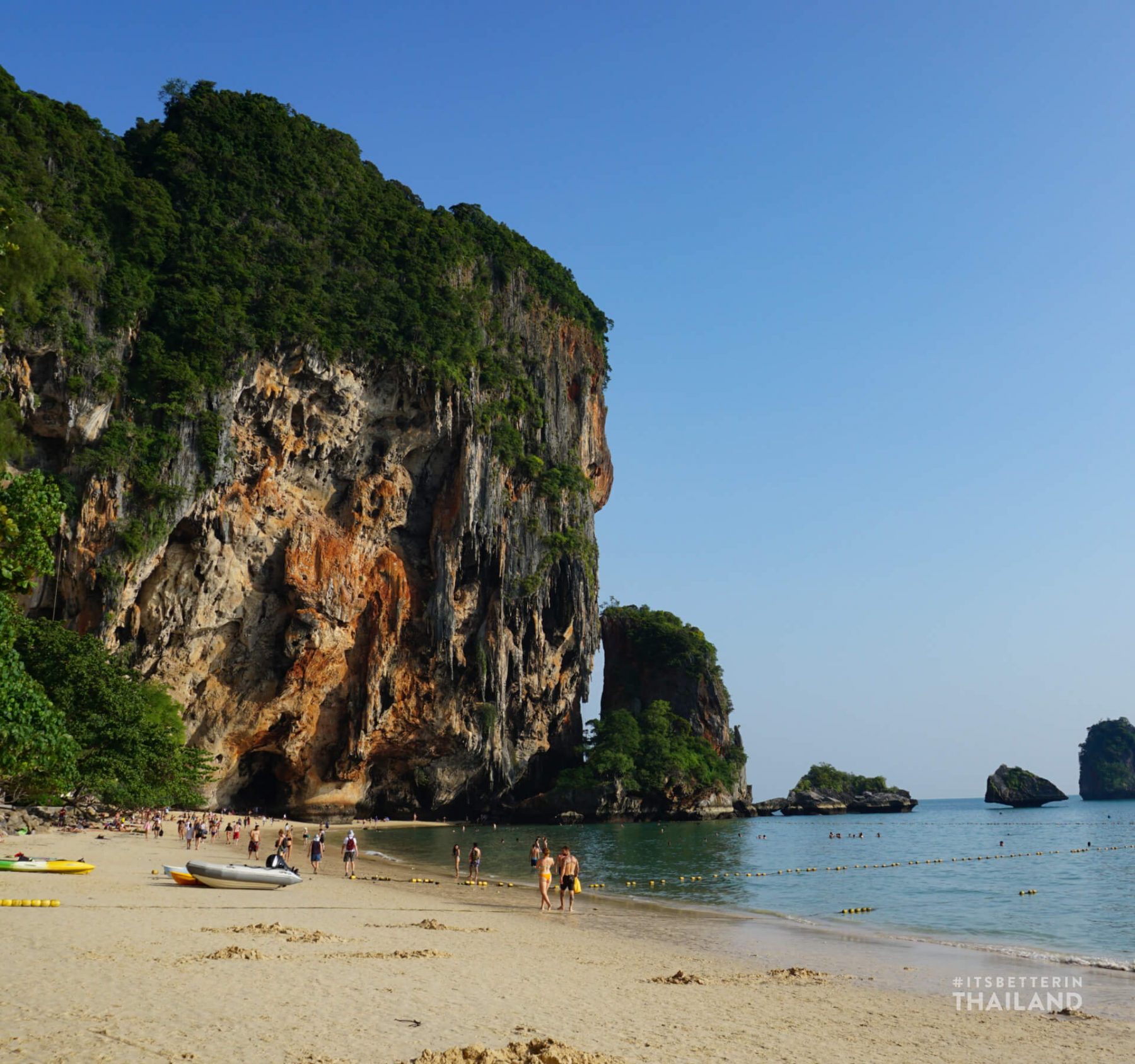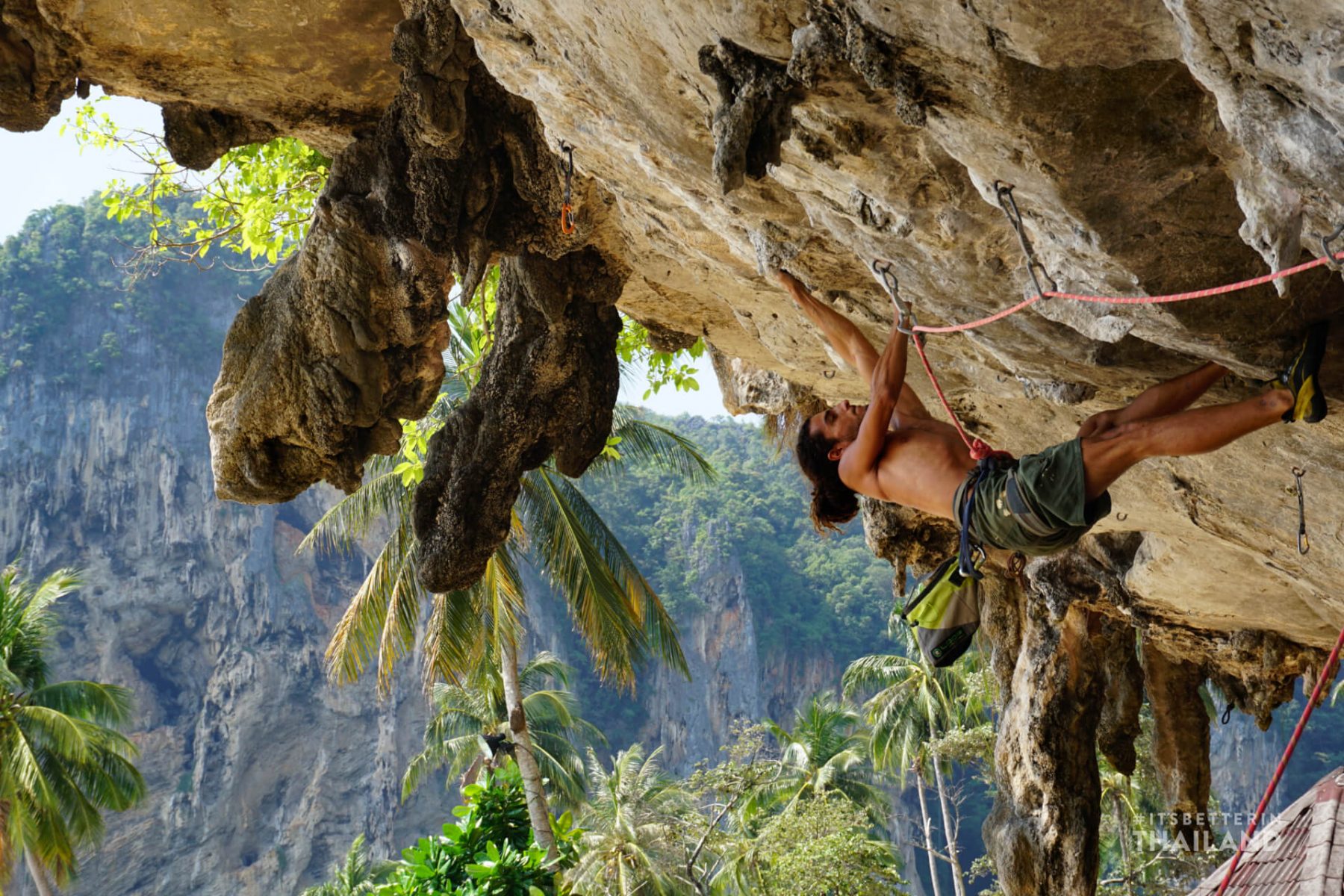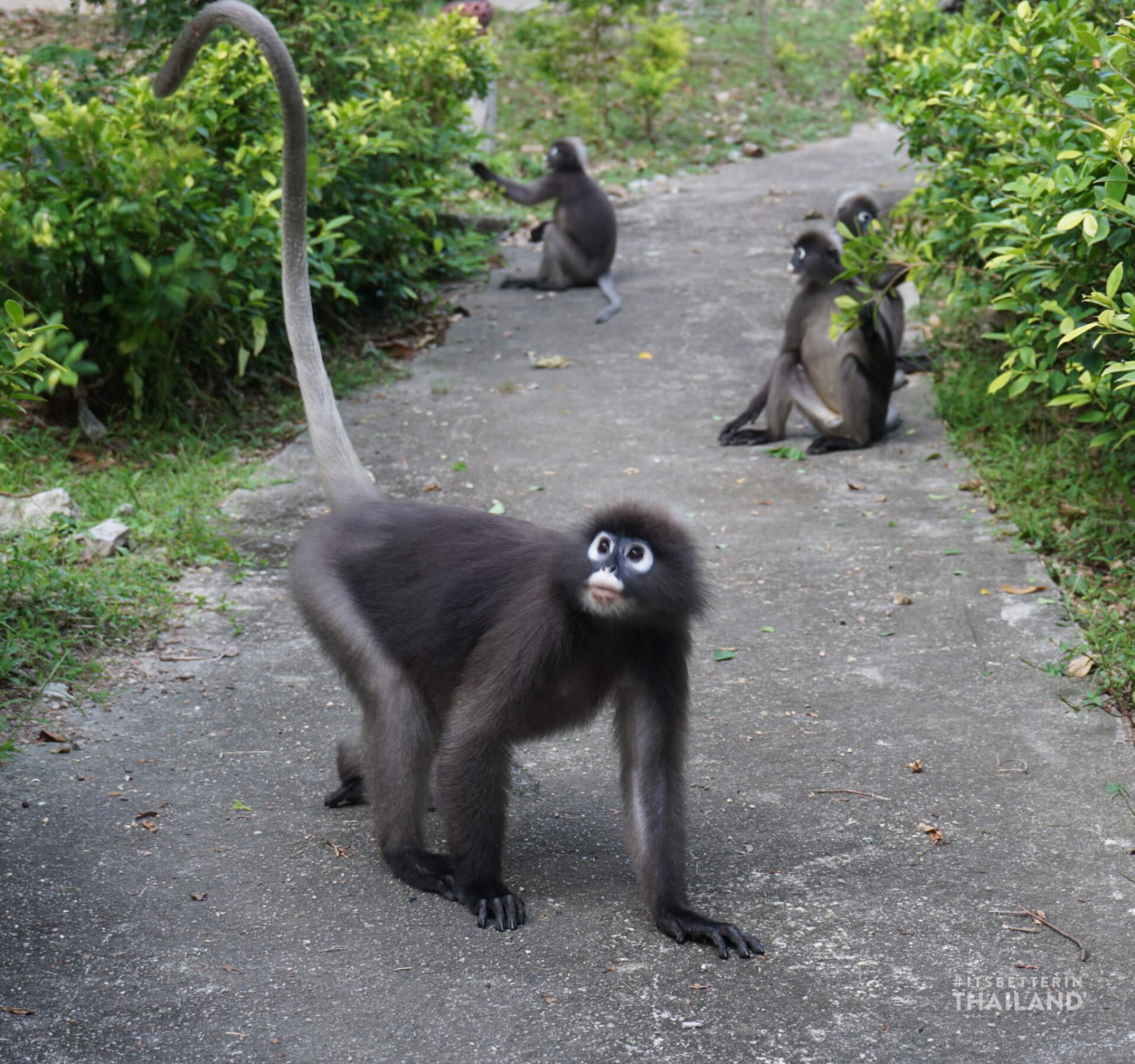Rock Climbing in Thailand

If you plan to go rock climbing in Thailand, you could spend a very long time there and hardly touch the routes that are available. There are many areas of magnificent limestone cliffs surrounded by beautiful nature.
There is a great community of climbers in Thailand from all over the world who are friendly, honest and psyched to go climbing. This guide aims to give you as much information that you will need if you are planning a climbing trip to Thailand.
Where to go climbing in Thailand.
There are many different climbing areas here and it can be confusing to know where to go. We have divided each location into the province and what part of Thailand it is in. Use the links provided to see a detailed guide on each one.
Southern Thailand
Krabi
- Mainland
- Railay and Tonsai
- Koh Phi Phi
Trang
- Koh Lao Liang
Phuket
- Phuket Island
Phang Nga
- Koh Yao Noi
Surat Thani
- Koh Tao
- Koh Phangan
- Koh Samui
Nakon Si Thammarat
- Kao Chum Thong
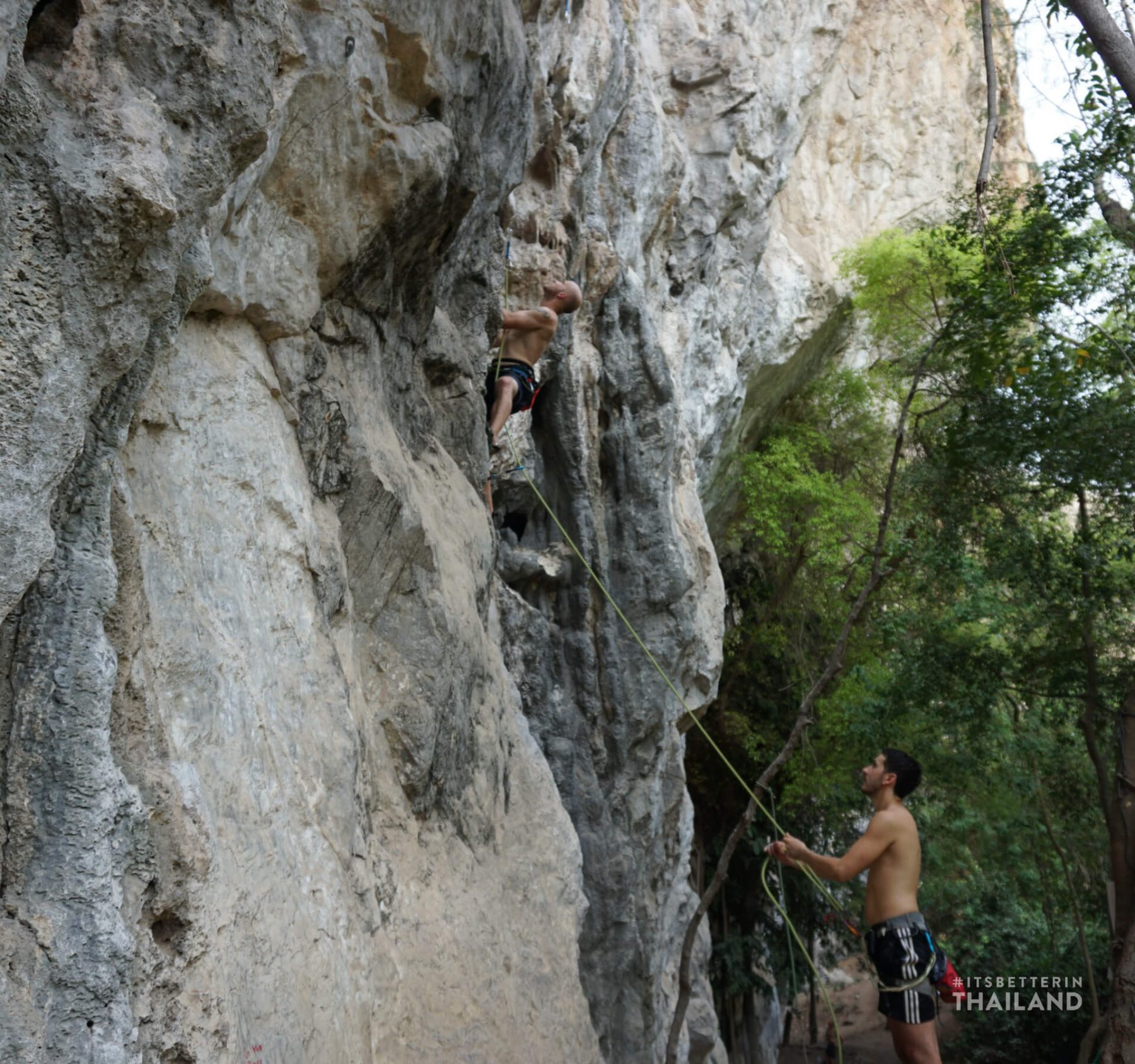
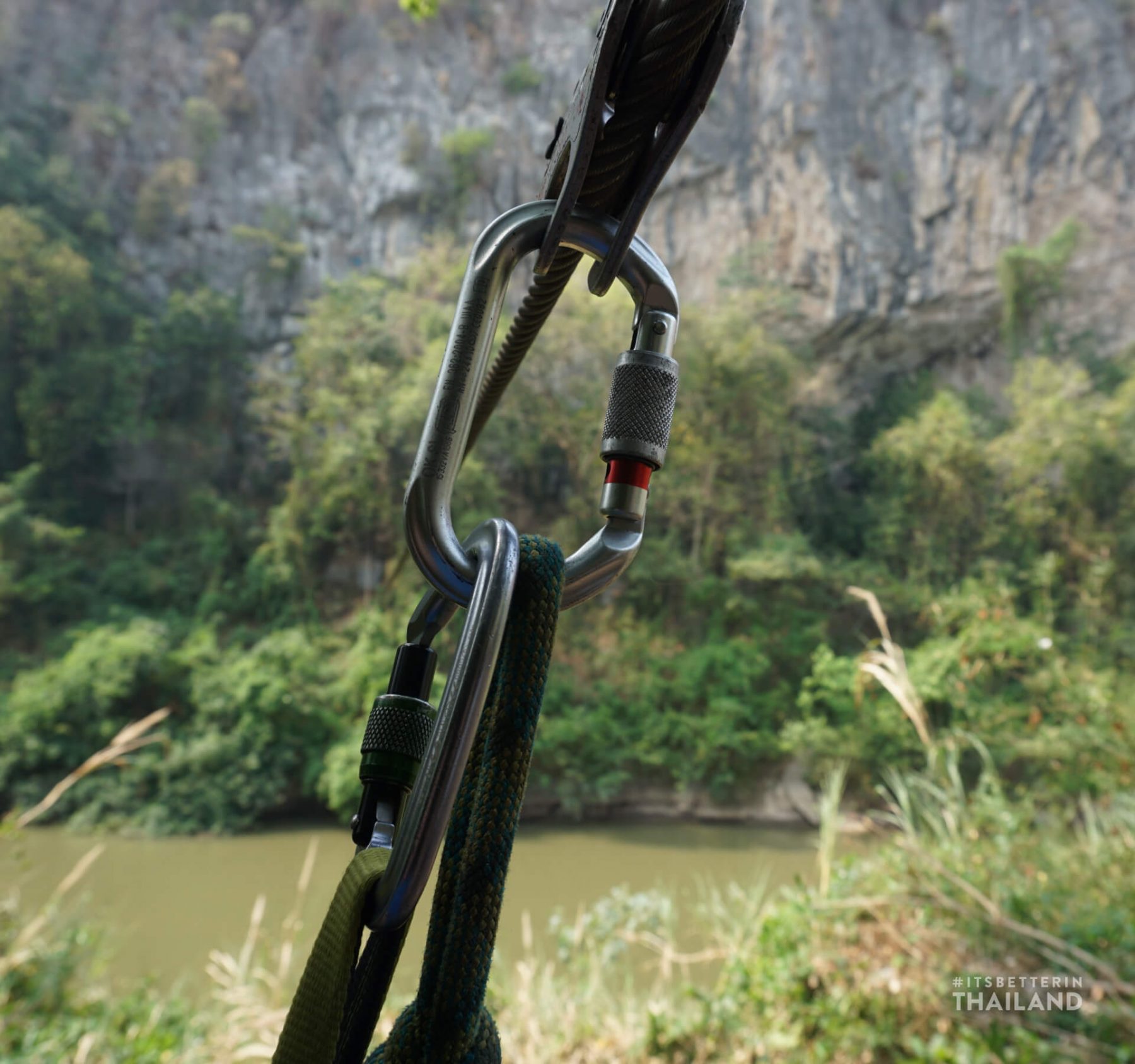
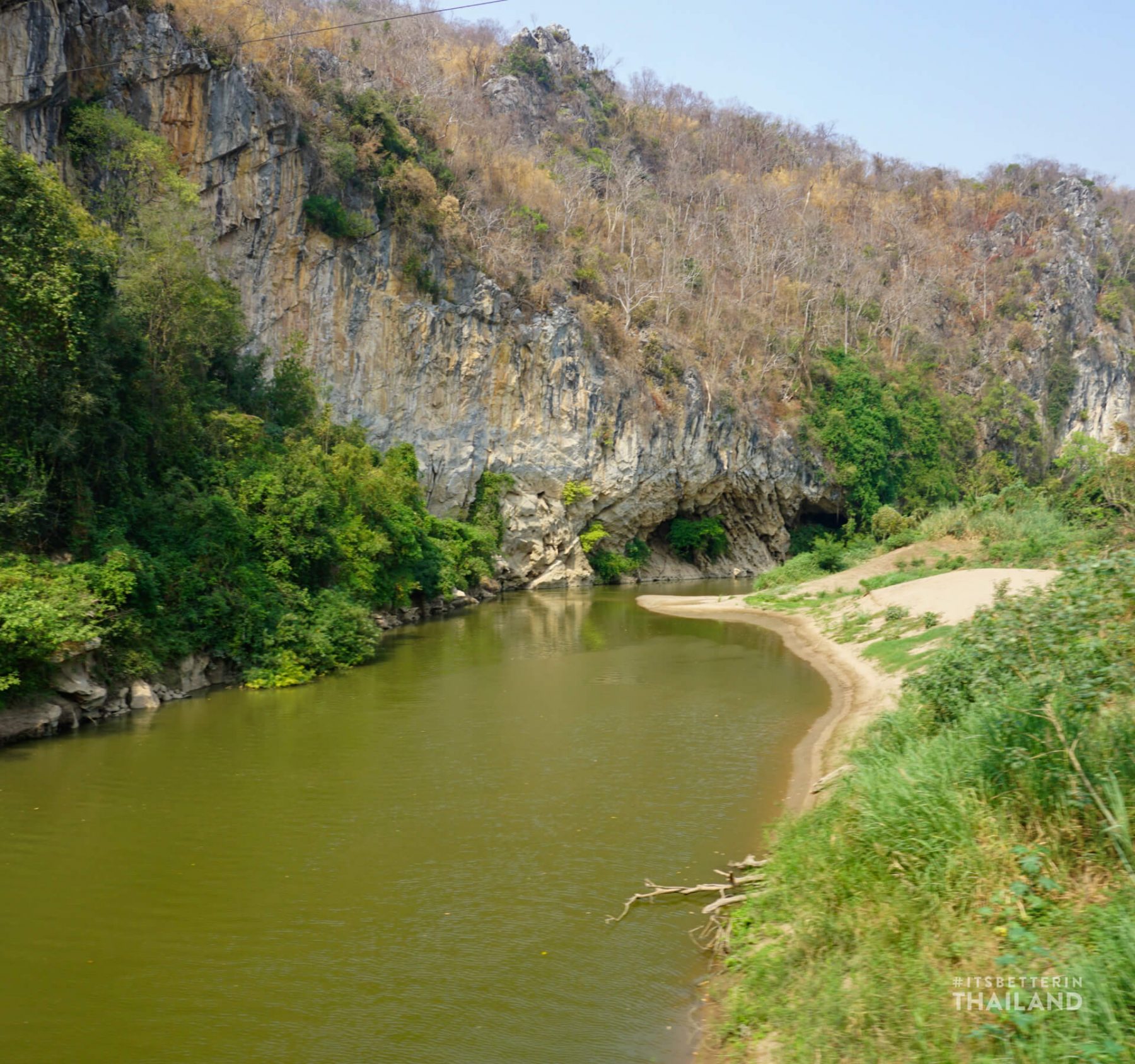
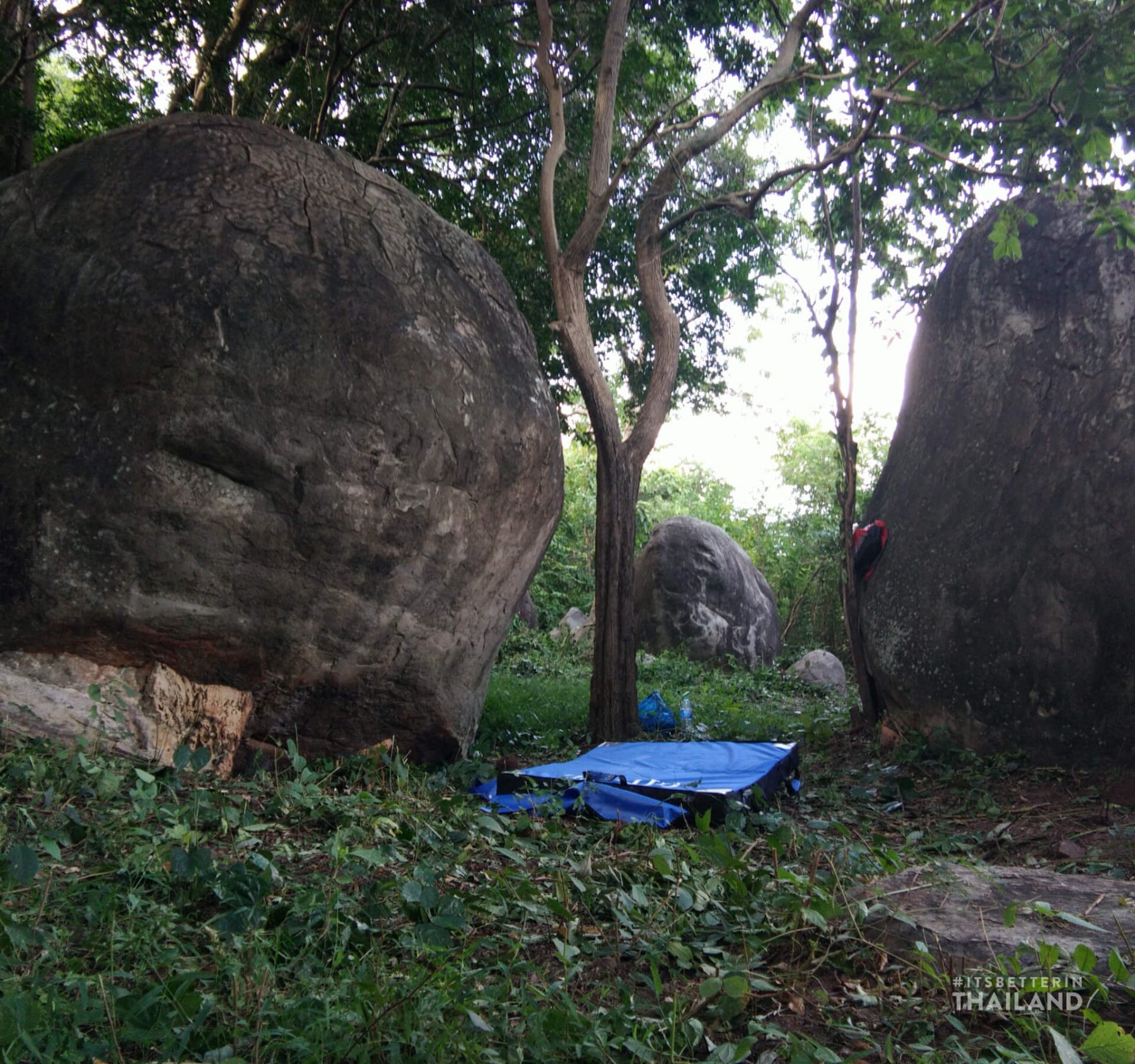
Northern Thailand
Chiang Mai
- Crazy Horse Buttress
- Chiang Dao
UPDATE: CLIMBING IS CURRENTLY FORBIDDEN IN CHIANG MAI!
Crazy Horse and Chiang Dao are closed to climbers until otherwise noted. The only option for climbing in the area now is to climb in Lampang with permission from CMRCA. Head to their website or Facebook page to contact them and for updates of the Crazy Horse closure.
Lampang
- Mueang Lampang District
Khon Kaen
- Khao Suan Kwang Zoo
- Si Chompu
Indoor climbing gyms
You may not always be able to head out onto the rocks. It could be raining, too hot or you might just be in a location that doesn’t have nearby climbing outdoors. Fortunately, there are a few different climbing walls in Thailand that we can escape to.
Phuket
Bangkok
Sports World – Imperial Lad Phrao
Chiang Mai
CMRCA (Chiang Mai Rock Climbing Adventures)
Khon Kaen
Koh Tao
Rock climbing in Laos
Not Thailand, but there is an amazing climbing area in Thakhek, Laos that is very popular and so close to the border that it had to be included in this guide. There is a big climbing camp that is easy to get to and some climbers will often take a short trip there from Bangkok.
Check out our post on Rock climbing at Green Climbers Home for more details.
Types of climbing in Thailand
Bouldering – Low-level climbing just a few feet from the ground. No harness or rope is required but you will need a crash pad for safety.
Sport climbing – Routes of varying heights that have bolts place in the wall for protection. This involves the use of a harness and rope, amongst other specialized equipment.
Multi-pitch sport climbing – This is essentially more than one sport route in sequence to gain greater heights.
Deepwater soloing – Climbing above deep water. You will not be attached to a rope but the water will break your fall.
Trad climbing – No bolts are drilled into the rock. You need to place your own gear into cracks within the wall. All though it is not so common in Thailand, there are locations where you can go trad climbing.
What gear to bring
It is easy enough to climb in Thailand without bringing any gear with you. In the more popular locations, you can rent gear or find partners who are willing to share with you. But if you want to explore some of the other areas, you may wish to bring your own equipment or buy when you are here.
Note: Sports equipment is generally more expensive in SE Asia.
The equipment you need will depend on what type of climbing you will be doing but here is a list of everything you may need:
Climbing shoes: You will want to have your own shoes. You can rent them in some places but they may not be very good and you will then be wearing shoes that many other people have had their sweaty bare feet in.
Harness: If you only plan to boulder or do deep water soloing, you will not need a harness. For sport climbing, you are going to need one.
Rope: The same applies as above. A 70m rope will be enough for most routes but an 80m rope will be better if you want to get on some of the longer ones.
Quickdraws: a set of 15 will be enough for most routes. It is advisable to bring a couple of extended quickdraws too.
Belay device: Bring your preferred choice but you are going to need one if you want anybody to climb with you.
Safety sling: You will need one of these to attach yourself to clean routes, anchor yourself or for other emergency situations.
Carabiners: As well as the one you use for your belay device and sling, it is always recommended to have an extra spare.
Climbing chalk: All though this isn’t necessary to climb with, it can make the climbing easier when your hands start to sweat.
Guide book: There are different guidebooks available for Thailand, covering the whole country or just certain regions. It will probably be easier to just buy it when you are there though.
Gear rental
As previously mentioned, it is possible to rent climbing equipment in some areas of Thailand. In most places, it will be well looked after and meet safety requirements, but always do your own checks before using any rented gear.
Where to rent gear:
- . Tonsai/Railay
- . Bangkok
- . Nam Pa Pha Yai climbing camp
- . Chiang Mai
- . Khon Kaen
- . Green Climber’s Home (Thakhek, Laos)
Finding a partner
There is a very close community of climbers in Thailand and we are a pretty friendly bunch of people. There are always other solo travelers looking for partners or people that will just let you tag along with them. If you go to one of the more popular destinations, such as Tonsai, you can just turn up and pretty much be guaranteed to find people to climb with.
There are also a couple of Facebook groups about climbing in Thailand. Just post up where you want to climb, the dates and what grade you are climbing and there will usually be somebody else keen as well.
Let’s go climbing! ~Thailand~
Rock climbing in central and North-East of Thailand
Learning to climb in Thailand
You have never climbed outside before but are eager to give it a go? Or you just want to brush up on your skills. There are various places to hire a climbing guide in Thailand.
Krabi – There are a few different climbing schools in Tonsai and Railay bay. Just turn up and ask around the different shops. My recommendation would be to Google climbing schools in Krabi and check out their reviews.
Bangkok – Any of the indoor climbing gyms in Bangkok city will have courses on how to lead climb. This could be a great place to learn this skill before heading out onto the rock.
Chiang Mai – The main organization here is the CMRCA (Chiang Mai Rock Climbing Adventures). They are the people to go to for all your guiding and renting needs. They can be reached through their website, via Facebook, or by phone. You could also just turn up at the CMRCA shop if you are in Chiang Mai.
Khon Kaen – There is mostly just bouldering here but you can contact the KKCC (Khon Kaen Climbing Club) who can arrange to take you out for the day and give you a guided tour and a few lessons on how to boulder. There are also some sports routes that have recently been developed in the Si Chom Pu district. You may be able to organize a trip out there with the club.
Nam Pa Pha Yai – This climbing camp in Saraburi has its own guides that you can book for the day.
Thakhek – Head to Green Climbers Home in Laos and learn how to climb on some incredible limestone rock.
Pricing will vary depending on school and location. It is best to contact them directly to find more info.
Climbing etiquette
We are very lucky to have permission to climb on all this amazing rock. The climbing community is one that is built on a trusting and caring nature. Let’s keep this trust going so we can continue to do the thing we love.
Don’t litter – Try to keep the area in the same (or better) condition as how you found it. Take any litter away with you and pick up any that you see along the way.
Don’t spray beta – This is when somebody tells another climber how to do the route when they didn’t ask for advice. This may be done pre-climb or while they are already climbing. An example would be shouting out where a certain hold is as the climber is struggling on the wall. Don’t do this without their permission. Some people like to climb a route without any knowledge of it (otherwise known as an on-sight). Also, everybody has different body sizes and styles of climbing. What worked for you, might not work for them and you just end up confusing them. Don’t be that guy or girl!
Don’t steal gear – As mentioned, there is a lot of trust amongst climbers. We will often leave our bags and equipment laying around. You will also sometimes see quickdraw left on the wall. This is usually when somebody is projecting the climb (see climbing terminology below). Please leave this equipment on the wall.
Keep the belay areas tidy – You can leave your bag and other stuff on the ground and it will generally be pretty safe in most areas. But leave it somewhere out of the way of where people will belay from. It can cause a trip hazard.
Playing music at the crag – There is nothing wrong with blasting out your favorite tunes if it is just you, but not everybody will appreciate your taste in music. If other people are climbing, ask them if they mind before you play music. Some people prefer peace and quiet. It can also be dangerous if the climber and belayer are not able to communicate properly over the sound of your music blaring.
Let us know in the comments if you have any pet hates when it comes to climbing etiquette.
Safety advice
Rock climbing is an extreme sport and so it does carry its risks. With that said, we can still minimize these risks by following certain safety guidelines. Most accidents that happen in the sport of climbing are human error. It doesn’t matter if you are a total beginner, or if you have been climbing for 50 years, never get complacent.
Check your equipment – You should be doing regular checks on your equipment to make sure they are safe to use. If you have bought your own stuff from new, you know the history of it. If you have bought second-hand, or you are renting, you don’t know what it has been through. Definitely do a safety check on any equipment that you rent before using it.
Communication – Your climbing partner is there to literally save your life if you are to fall. Make sure you are both clear on how you will communicate with each other at the crag.
Partner check – Before you step up on the wall, check your partner and get them to check you. Make sure the belayer is clipped in properly with the carabiner locked and that the climber’s knot is tied properly. It is a lot less likely for two competent climbers to get it wrong.
Double and triple check – Make it a habit to check the system more than twice whenever there is a change in it. For example, if you need to re-tie your rope at the anchor, weight the rope and double-check the whole system to make sure it has got you before removing your safety sling.
Never stop learning – There will always be new stuff to learn within this sport. Don’t ever think you know everything. Practice tieing different knots, using different belay devices, different ways of setting up anchors. Watch climbing videos on Youtube. The more you know, the safer you will be.
Insurance
Medical bills can be very expensive in Thailand if you go to a western standard / private hospital, and if you needed to spend a few days or weeks in the hospital, you are likely to pay a huge bill. It is recommended to purchase the correct travel or health insurance that will cover rock climbing.
Basic travel insurance will not cover rock climbing activities and unfortunately, it will cost more to make sure you are correctly covered, but you will be thanking yourself that you spent the extra if there was an accident. Make sure to read all the small print and check to see what activities are included in the package. Contact the insurance company if you are not sure.
Best time to climb in Thailand
It is possible to spend all year climbing in Thailand but certain seasons will be better than others.
November – February: This is probably the best time to go. It is much cooler and dryer in these months.
March-May: The temperature can get really high in these months. You can climb but you are going to get very sweaty and it may feel harder.
June – October: This is the monsoon/rainy season. It doesn’t rain all day every day and you can definitely get a lot of climbing in still but be prepared to have more rest days than you usually would. The benefit of coming at this time is that things are usually cheaper.
Climbing terminology
For anybody that doesn’t climb, hanging around with a bunch of climbers can sometimes sound like they are talking a completely different language. We are here to help translate some of the terms you may encounter in the climbing community.
- Beta – This is the word that is used to describe the way in which to climb a route. It could be what climbing holds to go for or how to position your body.
- Belayer – The person who is on the ground securing the rope.
- Sending – When a route is climbed without resting on the rope.
- Projecting – If somebody is trying to climb a route that is hard for them, they may have several attempts at it before finally sending it (see above). This is known as projecting the route.
- Redpoint – The term used when a route is climbed after projecting it.
- Onsight – When a route is climbed without falling for the first time with no previous knowledge of it.
- Flash – When a route is climbed without falling for the first time with previous knowledge of it.
- Whipper – When a climber has a big fall into the air.
- Crux – The hardest part of the route.
My personal climbing itinerary
There is a big list above of places to climb in Thailand, but some of these are smaller destinations with just a few routes. Therefore, I will give you my recommendation on the best places to visit if you are limited for time.
The two main places I would recommend are Tonsai and Nam Pha Pa Yai (NPPY). I will list some itineraries depending on how much time you may have.
2 weeks: I would choose just one place to climb, out of the two I just mentioned. You can easily stay at either of these for that amount of time. If you want more of a party scene, head to Tonsai. If you want a bit of a digital detox, go to Nam Pha Pa Yai.
4 weeks: Start in Tonsai and spend 2 weeks there, fly to Bangkok and then spend the rest of your time in Nam Pha Pa Yai.
Up to 2 months or more: Do the same as above, but when you are finished in NPPY, travel up to Khon Kaen for a couple of days of bouldering (skip this if it is not your thing). Then head to Nakhon Phanom and into Thakhek, Laos to spend the rest of your time at Green Climber’s Camp.
If you don’t want to boulder, either take a bus from Saraburi to Nakhon Phanom or train back to Bangkok and then fly there.

